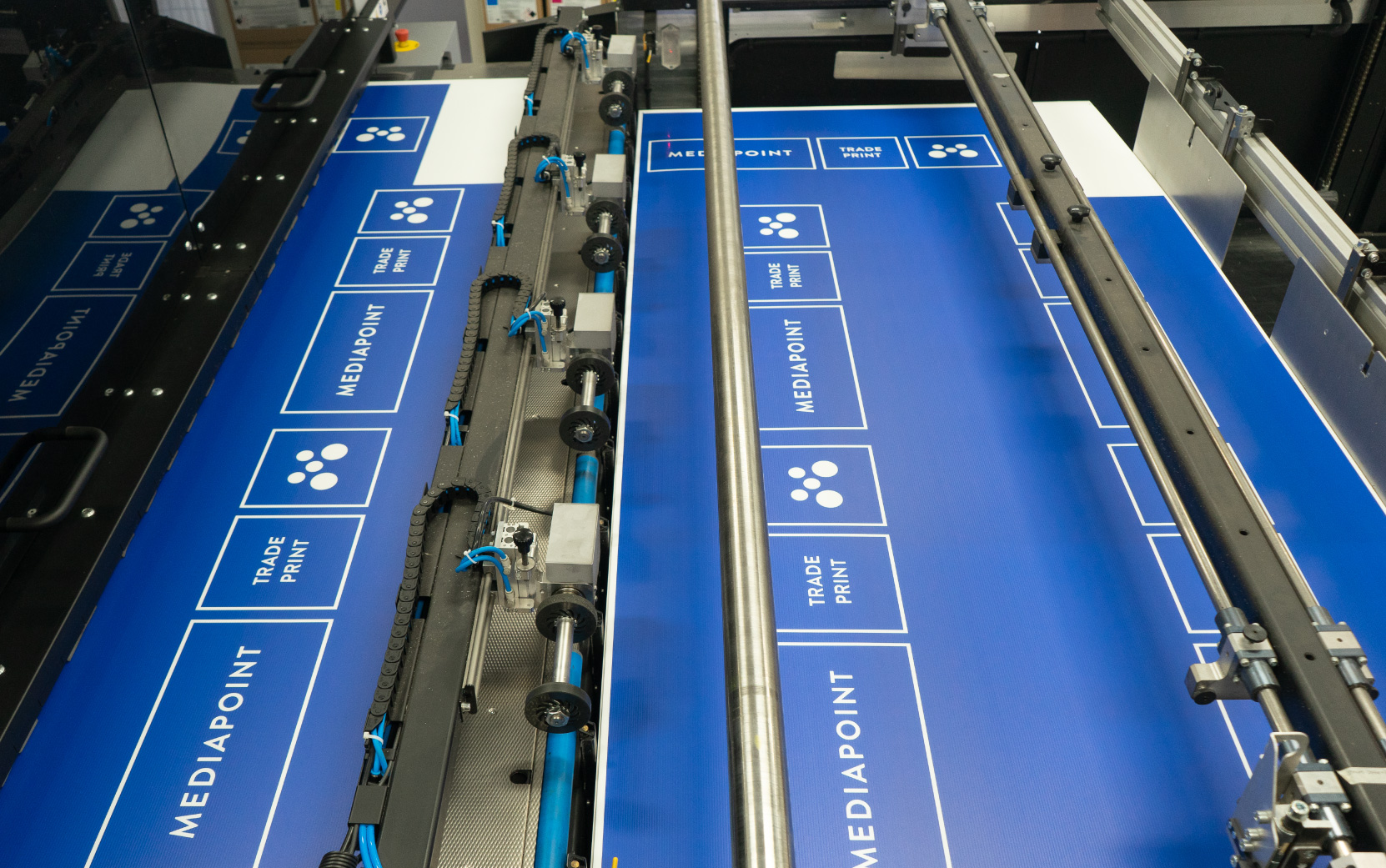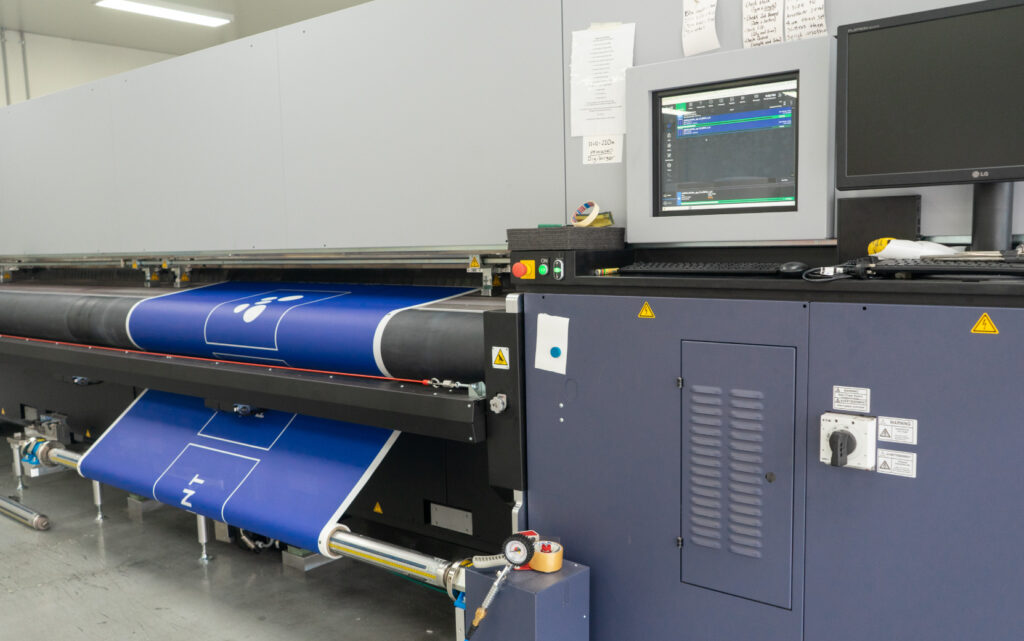The Costs of Wide Format Printing Explained

In this article we break down wide format printing costs to give you a peak behind the scenes. You’ll be able to better understand exactly where gains can be made. Plus, you’ll have a better idea of the difference between trade printing and in-house production.
Wide Format Printing Equipment Cost & Capacity
First and foremost is the actual cost of the large format equipment to be used. The capital expenditure of these assets is factored into the cost of each sheet. When calculating this, organisations need to also consider the capacity of the selected printer. At Mediapoint, we have invested in large format printers that can handle more volume, to bring down the cost per sheet and produce more jobs per hour. In tandem with our streamlined batching processes we can feed more volume through the line in less operational time. That means we can pass on greater savings to our trade clients and give them greater margin for reselling.
For the clients we cater to best (high volume resellers) this is the optimal process, however there will inevitably be some tradeoffs. We’ve covered those in another article that outlines how to evaluate a trade printer and make sure they match your needs.
Ink Plays a Key Part in Large Format Printing
Fundamentally you need ink to print – there is no way around this commodity. An ink cost per square meter is factored into the cost of any printing run. When dealing with large format prints this can be a significant cost – particularly if the equipment being used is not efficient in its ink usage. You’ll find that entry level or cheaper equipment will be less effective in its use of inks. So you may still end up with a quality print, but the ink costs per square meter are much higher.
We run premium Durst printers on a single printing mode. These are optimised for a set quality of print in all batches. This allows us to sustain efficient ink usage even at the high volume our clients expect, whilst sustaining the level of print quality their own customers expect.
Floor Space Required for Wide Format Printers
Large printers need a lot of floor space. From handling stock, to a working and dispatch area; each piece of equipment needs a significant amount of real estate. At Mediapoint we have over 2000sqm of internal warehouse space. This enables our teams work safely and efficiently when handling print jobs. Plus, it future-proofs our expansion plans.
This is an oft-overlooked aspect of wide format printing, and a major reason why scaling production / capacity is hard for your average print shop. Once the capacity of existing equipment is reached, not only do you need to outlay capital for equipment but also rental of extra floor space or sometimes even an entirely new premises. That expenditure usually leads to increase in print pricing which can affect relationships with customers and significantly impact your bottom line.
Finishing
Another overlooked aspect of wide format printing is the added finishing equipment and processes required. Finishing has a linked impact on quality and delivery of print runs. Sometimes, the cost of good finishing equipment can cost more than the actual print equipment. Then we must consider the cost of staff, training, and the time needed to finish orders. Once again, this all contributes to the final pricing of print jobs. Any process optimisations or capital savings mean less costs overall and greater margins to play with. In printing, economies of scale are very real – which is why trying to justify completing high-volume, repetitive work in-house can be difficult.

Quality Assurance and Dispatch
Unlike other forms of print, like the name suggests, large format printing is large. Due to the materials and equipment involved the print process differs from smaller-scale operation. That means it is necessary to conduct QA work prior to dispatch. It also requires customised packaging and delivery option which ties up a lot of resources as well.
As you can see, there are many factors at play when it comes to the pricing of commercial printing. Due to this the quoting process can often take quite a while, delaying projects or blowing out lead times. That’s why we’ve invested in our PrintIQ system – offering 24/7 live pricing and automated print processing.
If you’re a print resellers looking to provide accurate quotes, manage customer expectations, and get on with the business of selling, create an account today.


